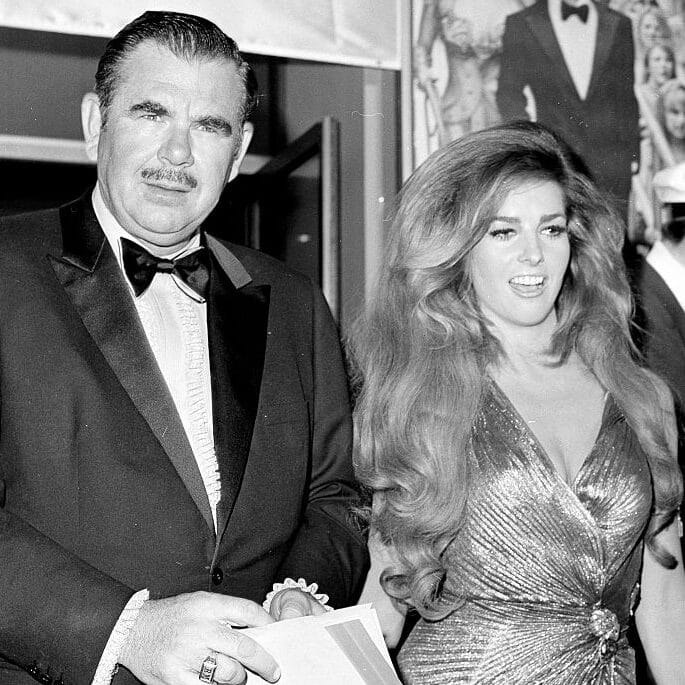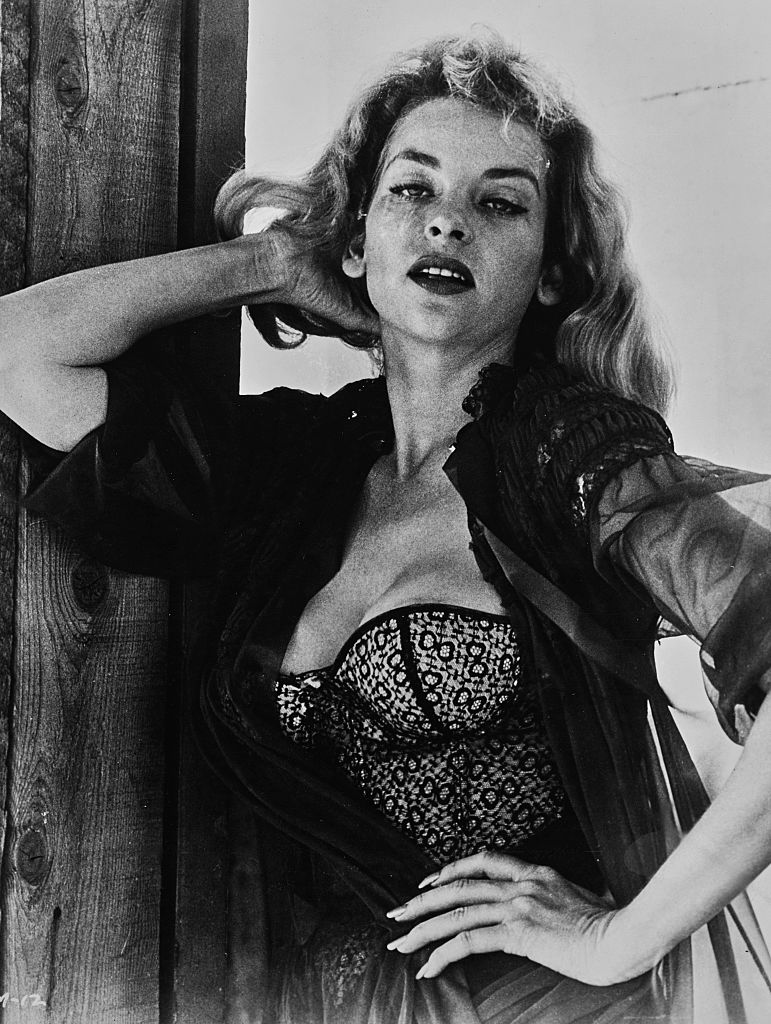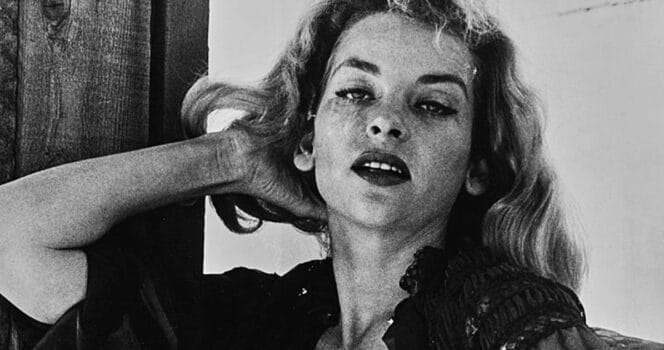Eve Meyer may not be widely known today, but in her era she was a captivating presence — a blonde bombshell whose beauty lit up magazines, movie screens, and the imagination of mid-20th-century America. Her life, marked by ambition and resilience, ended in one of the most devastating aviation disasters in history.
She began life far from Hollywood glamour. Born Evelyn Turner on December 13, 1928, in Georgia, she grew up in a family marked by both love and upheaval. Her father served in the U.S. Army, her mother worked long hours in textiles, and when the couple separated, Eve — just ten years old — was sent to live with her grandmother. Despite these challenges, she remembered childhood picnics and fishing trips fondly. A natural tomboy, she thrived on adventure and sports and excelled in school, eventually graduating with honors.

Her early adulthood took her west. After high school, Eve worked for Western Union and was transferred to San Francisco, only to discover the promised job wasn’t available. That twist of fate led to her meeting a young photographer named Russ Meyer — a meeting that would not only reshape her life but also leave a permanent mark on American pop culture.
By the early 1950s, Eve had found success as a pin-up model, admired for her confidence, poise, and striking beauty. Her profile exploded in June 1955 when she became Playboy magazine’s Playmate of the Month, an achievement that cemented her place as one of the decade’s iconic faces. The feature captured the shifting cultural landscape, as media began embracing a bolder, more independent image of womanhood.

Her connection with Russ Meyer deepened both professionally and personally. The two married in 1952 and built a life together in a modern home overlooking the Sunset Strip. They shared their days with a dog, a cat, and a growing passion for filmmaking. Meyer, who would later become known for his provocative independent films, considered Eve his muse — not just for her beauty but for her sharp intuition and creative instincts.
She made her first on-screen appearance with an uncredited role in Artists and Models (1955), and by 1959 she had earned a key part in the action drama Operation Dames. Eve’s magnetism wasn’t limited to acting; she quickly became a vital force behind the camera as well. Throughout the 1960s, she helped produce several of Russ Meyer’s most defining works, including Lorna (1964), Mudhoney (1965), the cult classic Faster, Pussycat! Kill! Kill! (1965), and later, Beyond the Valley of the Dolls (1970). Her influence extended to everything from visual style to pacing, making her one of the most important — and often overlooked — women working in independent cinema at the time.
Although the couple divorced in the mid-1960s, they remained on friendly terms, continuing to collaborate professionally and maintaining mutual respect. Eve’s talents, both on-screen and behind the scenes, had become an essential part of Meyer’s creative universe.

Her life, however, ended suddenly and tragically. On March 27, 1977, Eve Meyer was aboard Pan Am Flight 1736 when it collided with a KLM aircraft in dense fog on the runway of Los Rodeos Airport in Tenerife. The crash killed 583 people — the deadliest aviation accident in history. Sixty-one passengers survived the Pan Am flight, but Eve was not among them. Her remains were returned to Georgia, where she was laid to rest. She was 48 years old.
Despite her untimely death, Eve Meyer’s legacy endures in the films she shaped and the trail she helped blaze for women in independent cinema. Her work challenged conventions, embraced bold storytelling, and encouraged a generation of filmmakers to experiment fearlessly. She was a model, a performer, a producer, and above all, a visionary who refused to be boxed in by the expectations of her time.
Decades later, her influence still lingers — in the cult classics she helped create, in the filmmakers she inspired, and in the reminder that even a life cut short can leave an indelible mark on American entertainment.




